Life at McMurdo Station, Antarctica is a unique experience that many dream of being part of.
At least that’s how I felt. Getting to live and work in Antarctica was an amazing opportunity that despite its ups and downs, I would do all over again in a heartbeat.
In this article, take a peek inside McMurdo Station, the continent’s largest research facility and “city” to see what daily life working in Antarctica (“the ice”) is like.
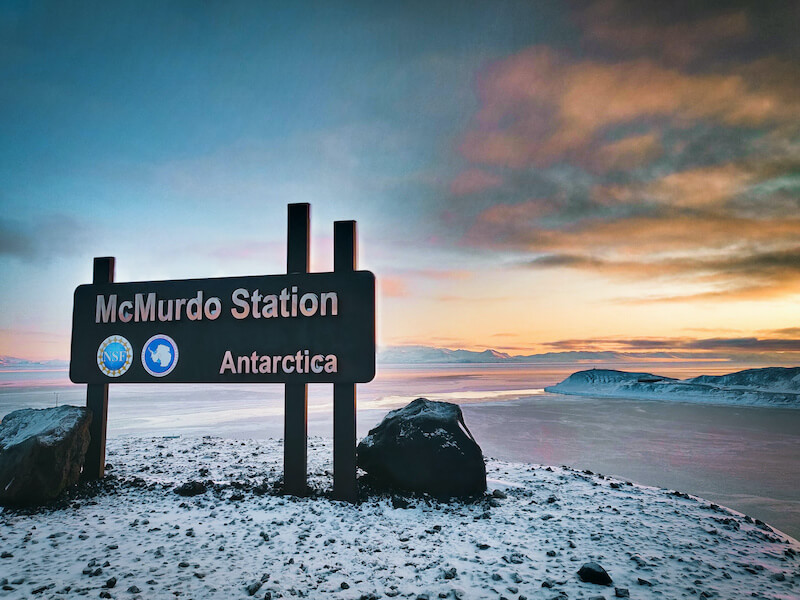
[joli-toc]
1. There’s a Club for Short People of Antarctica (SPOA)
SPOA aka Short People of Antarctica is for anyone 5’2” and under.
Or, as the slogan states: 62″ and under, under 62° south.
There’s even a flag.
The story goes that the limit was put at 5’2″ because that was the height of the tallest person in the group of short friends who started the club.
I don’t mean to brag, but in the 2019-2020 summer season, I was verified the tallest of the shortest.
My medical paperwork, I kid you not, put me at 5’2.99.”
I thought the nurse was joking when she wrote that, and when I asked if she was serious, she just shrugged and walked me to the next exam.
UPDATE: my medical paperwork listed me as 5’3″ in 2021 so I guess I’m officially out of SPOA? :(


2. You Can’t Visit McMurdo as a Tourist
While there are of course exceptions for special guests such as Anthony Bourdain or documentary crew, generally speaking, the only people staying in these research facilities are people paid to live in Antarctica (i.e. researchers and support staff).
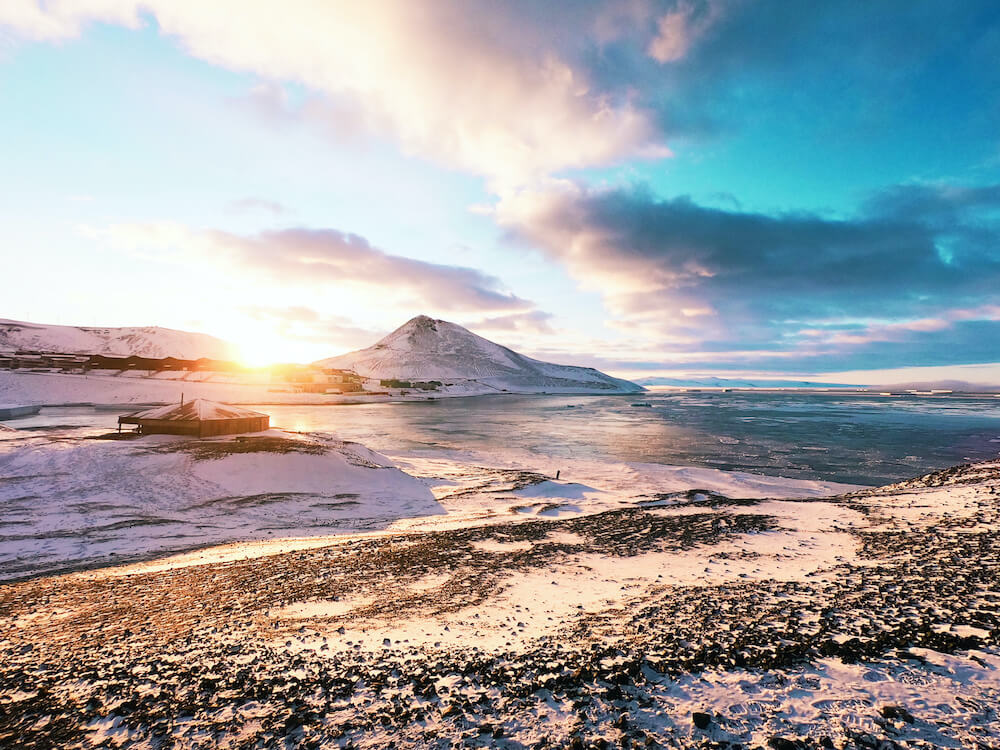
3. Everyone Works 6 Days a Week
Life on the ice is no vacation.
If you want to check off living in Antarctica from your bucket list, you’ll have to be ready to work around 54 hours a week.
Read more about what life is like at McMurdo Station
4. You Might Have 3 Roommates
Most of the dorms are double occupancy rooms with a shared ensuite bathroom, but the largest dorm, Building 155, holds up to four people per room.
During summer, these rooms are usually filled to full capacity.
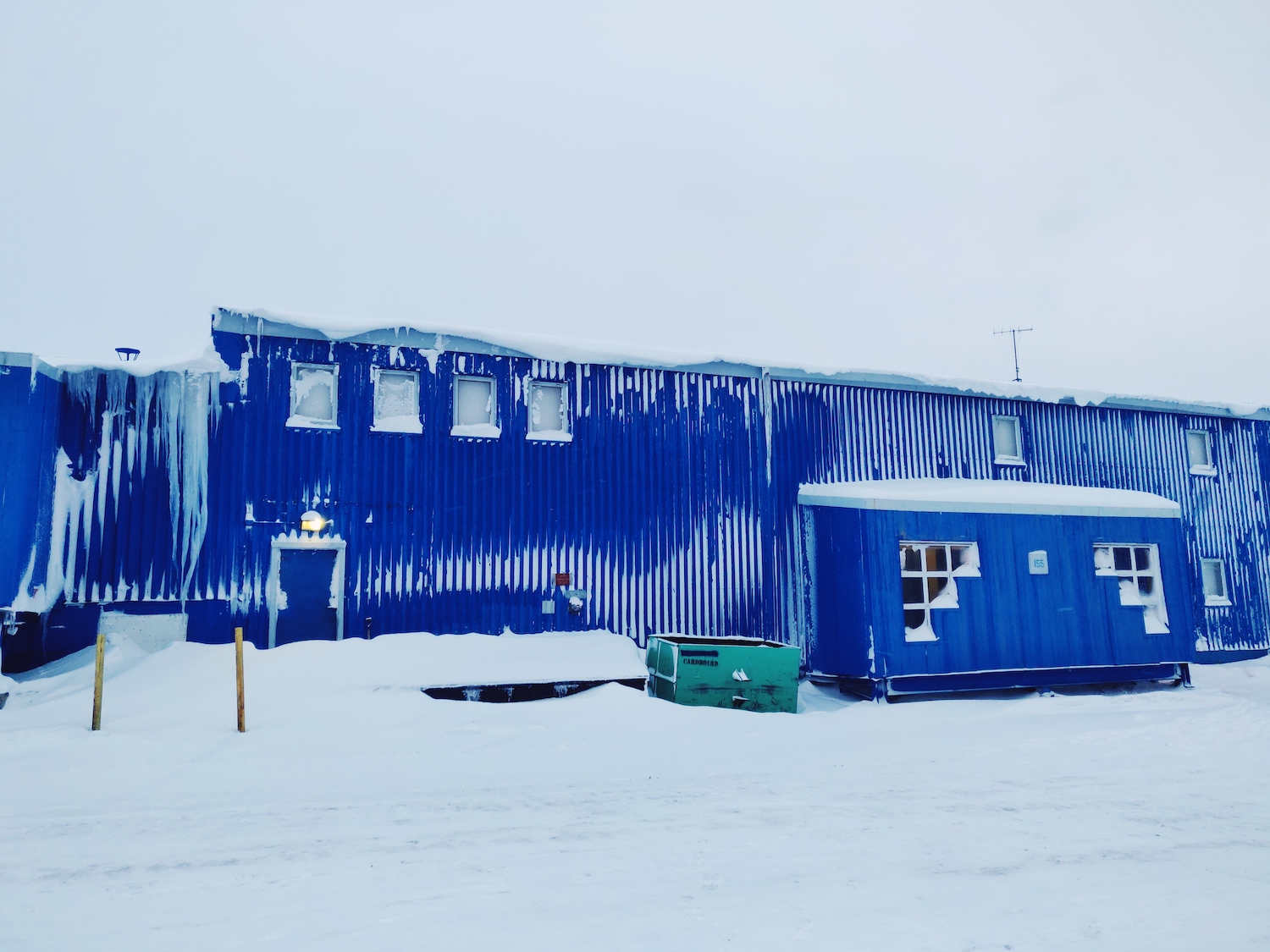
5. It’s Mostly Men and Mostly White
This probably doesn’t come as a shock, but it’s worth mentioning for those interested in life on the White Continent.
The men to women ratio is typically 70:30 with the majority of people down there being– surprise– white.
As an Asian American woman who had spent the prior seven years primarily around non-Americans while teaching English in Japan or working on cruise ships, it was fun talking with other women and BIPOC down there, swapping stories of what the experience was like for them.
I even remember seeing one of the few other Asians in the bar one night showing his peers that he could squat while flat-footed.
I busted out laughing and shouted to him “Asian squat!” as both he and I explained to our respective parties what that was.
#aznpride
Related: Life at the South Pole Station: Everything You Want to Know
6. Women Wintering Over Have to Take a Pregnancy Test
Because the station doesn’t have the medical capabilities to properly care for pregnant women and there are no flights in or out of the ice during winter, every woman staying (“wintering over”) is required to take a pregnancy test before the last flight leaves.
Also in during the summer season, if you become pregnant you’ll need to go home.
And on that note…
7. There are Free Condoms Everywhere
Every main restroom and all of the ones in the bars have a container of free condoms to avoid the previously stated situation, as well as STDs.

8. Working in Antarctica Means You Get the Antarctica Service Medal
The Antarctica Service Medal is a military award issued by the U.S. Department of Defense for U.S. military personnel or civilians who either served or worked in research facilities or aboard vessels for at least 10 days in Antarctica south of 60 degrees latitude.
This is probably the coolest souvenir and item I’ll ever own.


9. The Town Goes Dry When Provisions are Brought In
Provisions such as food and fuel are brought in once a year via ships between January and February known as vessel season, or simply “vessel.”
Various U.S. and New Zealand military entities also arrive in town during this time to assist in the efforts.
These few weeks are the busiest on station all year, the most populated, and tend to be a bit more rowdy due to the visitors who’ve spent weeks at sea.
As a result, the entire town goes dry with the bars closing and the store pausing sales on alcohol.
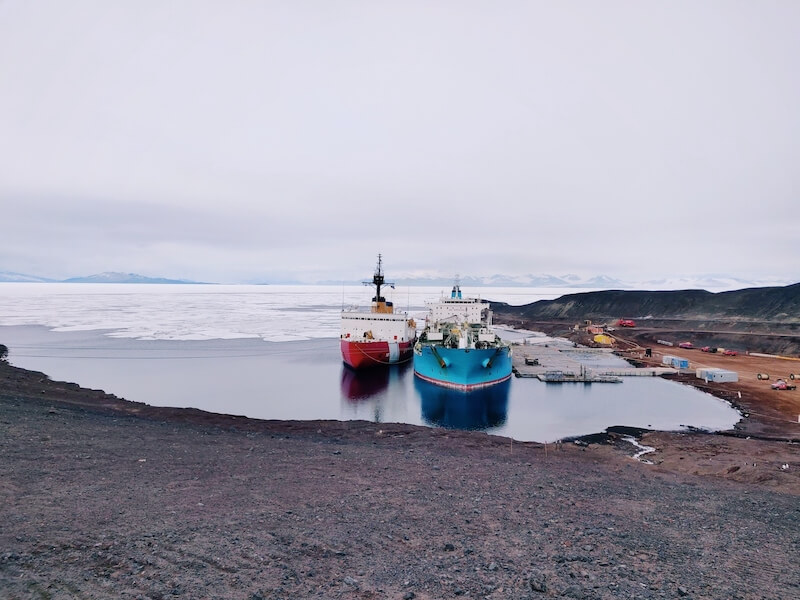
10. There are Weekly Alcohol Rations
To try to ensure that there’s enough alcohol to go around and no one abuses it (remember I said “try”), there’s a weekly limit on how much alcohol each individual can purchase from the McMurdo Store.
The limit might vary each season, but it looks a little something like one main purchase of either a single bottle of liquor or 12 beers, plus 6 beers or one lesser bottle of alcohol.
11. All Trash is Removed from the Continent– Even Poop
In accordance with the Antarctic Treaty, no waste can be left on the continent.
The international agreement was designed to protect the continent as much as possible from any human interference, which includes waste of all kinds.
Each type of waste is sorted, treated, stored, and then removed every year.
This includes food scraps, plastic, metal, recycling, and yes— even all the human waste generated from the scientists and support staff living in the research facilities.
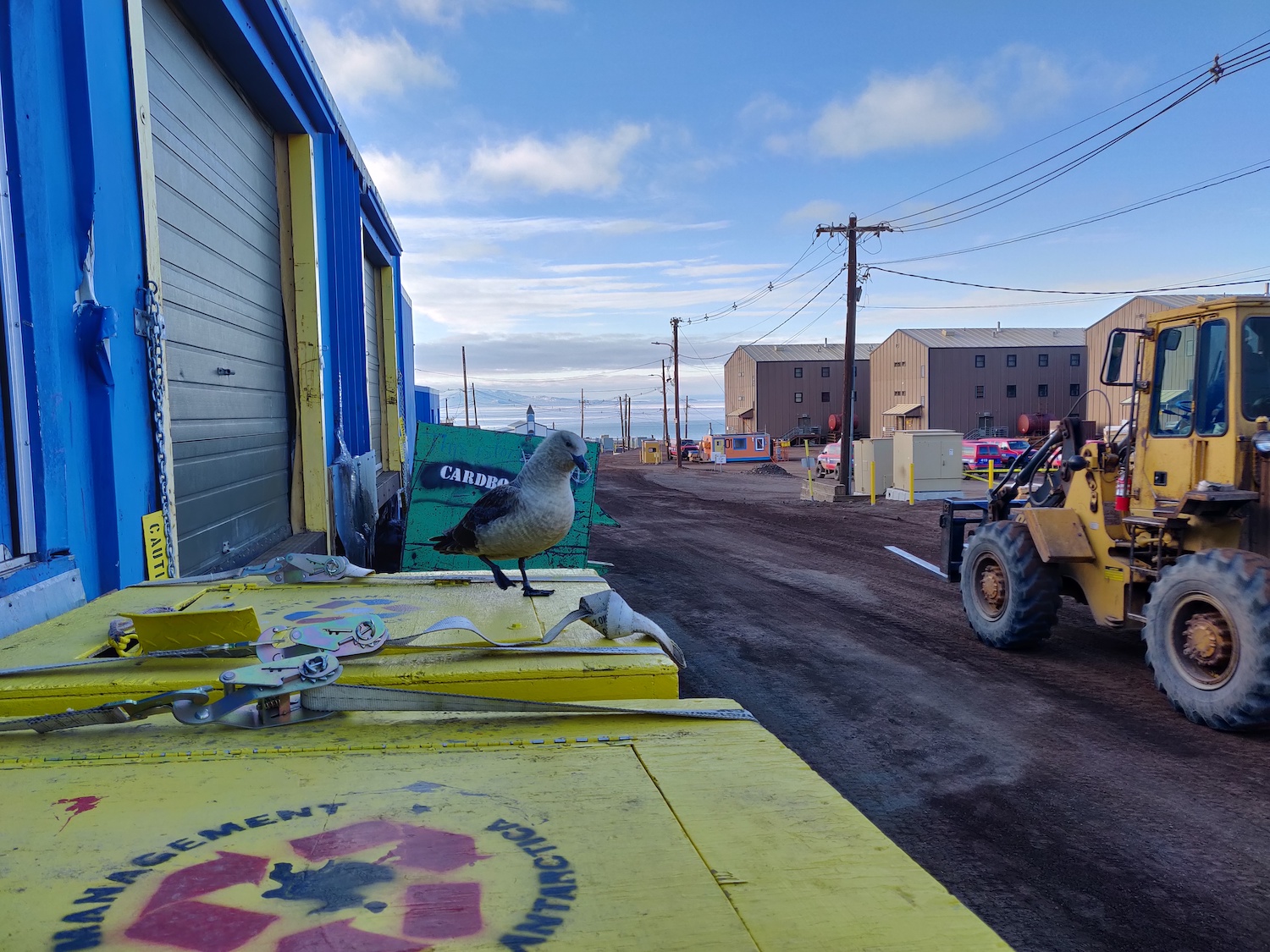
12. There’s a Thing Called Pee Bottles
If you go for a hike or you work in a field camp or worksite with no toilet, you’ll need to bring what’s so delicately called a pee bottle.
These are designated— and yes, reused— plastic Nalgene bottles that are used to collect and store urine until you can dispose of it properly.
As per the Antarctic Treaty, not only are you not allowed to just pee in the snow or ice at your convenience, but it could be grounds to get you sent off the continent permanently.
Have people gotten away with it? Of course.
I know of a handful of people who forgot their bottle and just had to answer nature’s call.
But in order to protect one of Earth’s last remaining mostly uninhabited continent and its environment, pee bottles are required.
And yes, this applies to women, too.
Us ladies were advised to practice before using it for real out in the elements, and there’s also a female urinal device that can come in handy as well.
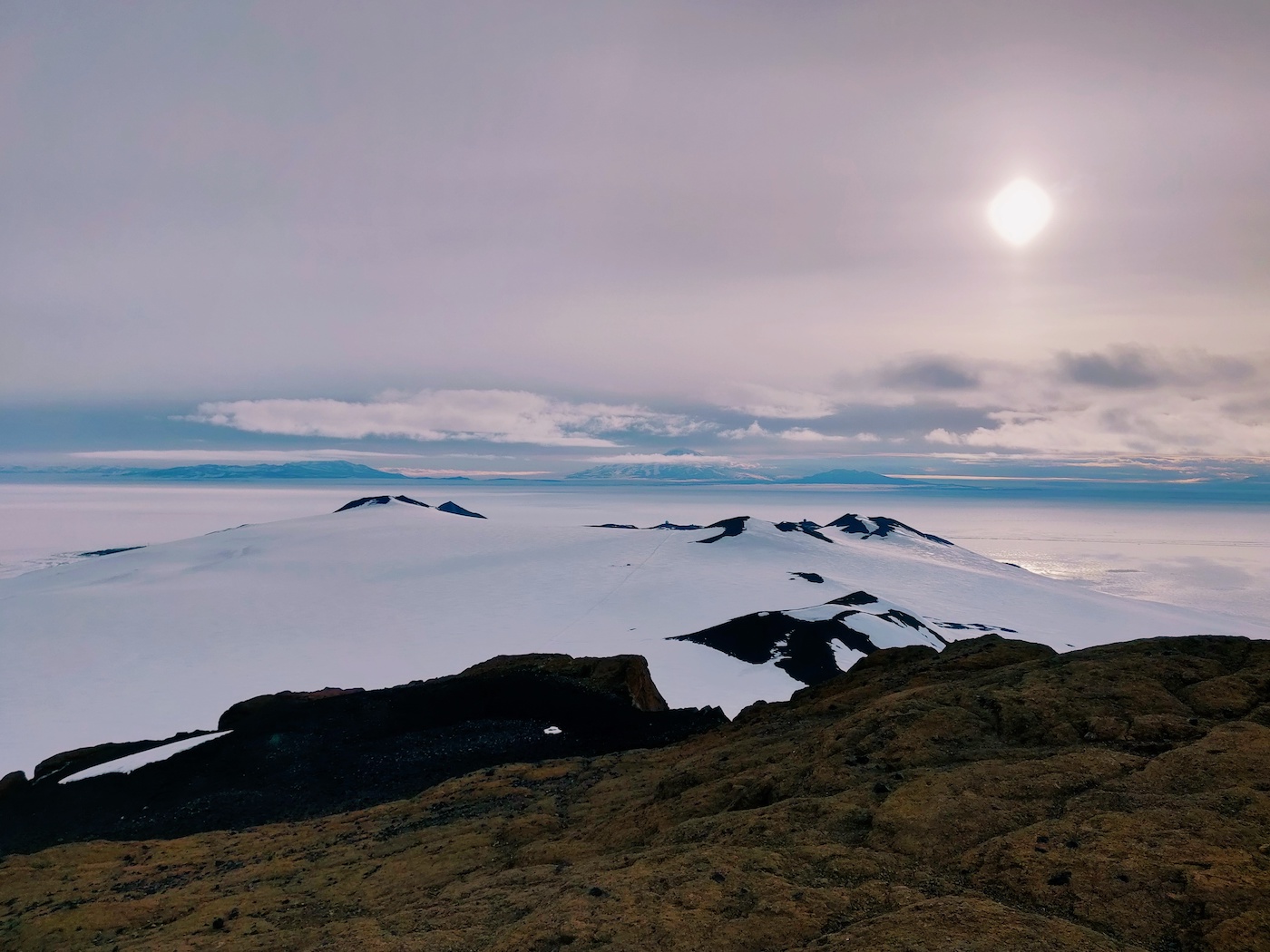
13. Communication is Old School
Working in Antarctica is like traveling back in time.
Internet connection and Wi-Fi capabilities are extremely limited, so besides basic email, most communication on continent is done through landline phones, pagers, and two-way radios.
McMurdo is notorious for having very slow online page loading speeds, especially in the summer when the town’s population increases to over 1000 people.
Even as a mid-rat, or night shift worker, during the peak of the summer season at 3 a.m., I was lucky if I was able to send a quick message through Facebook’s basic platform in under 10 minutes or load my Gmail in the basic HTML setting.
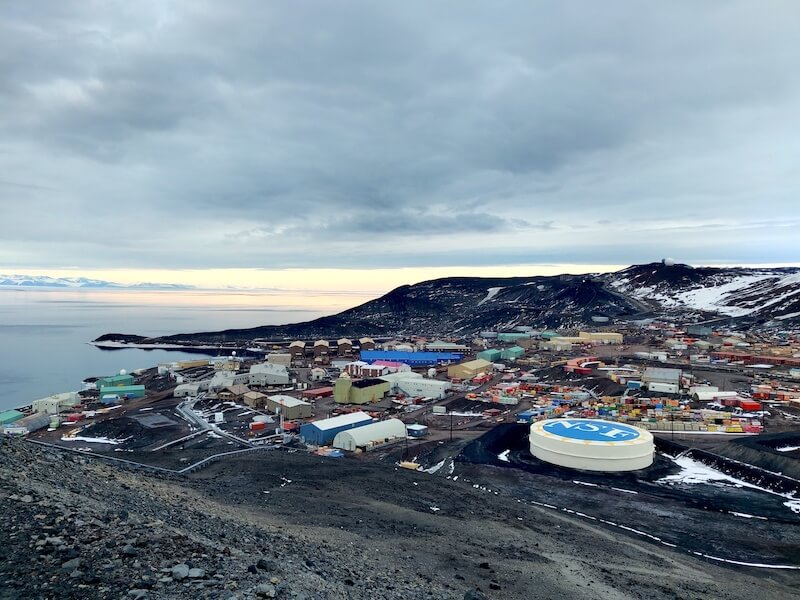
14. Flights Rarely Go as Scheduled
Between the gateway city of Christchurch, New Zealand and McMurdo, conditions need to be perfect in order for a flight to take off or land.
There’s always something, whether it’s issues with the planes or the weather.
Mechanical problem in Christchurch? Flight is rescheduled for 24 hours.
Low visibility in the airfield on the ice? Flight turned back to Christchurch.
That’s right— after finally having favorable conditions to take off out of New Zealand, you could make the 5-7 hour flight all the way to McMurdo and be within minutes of landing and STILL be turned around and sent back to Christchurch in what’s called a boomerang flight.


My flight to the ice was delayed a week, which meant I got 7 paid days in Christchurch to wander around. My flight out of Antarctica was about 8 days delayed, as well; so, average.
On the ice, you learn to expect the unexpected.
15. There’s an Annual New Year’s Eve Festival Called Ice Stock
Every New Year’s Eve in McMurdo, there’s a day-long outdoor music festival called Ice Stock.
Bands made up of people in town perform throughout the afternoon and into the evening, burgers and hotdogs are served, and people dress up in colorful costumes or the always popular animal onesie.
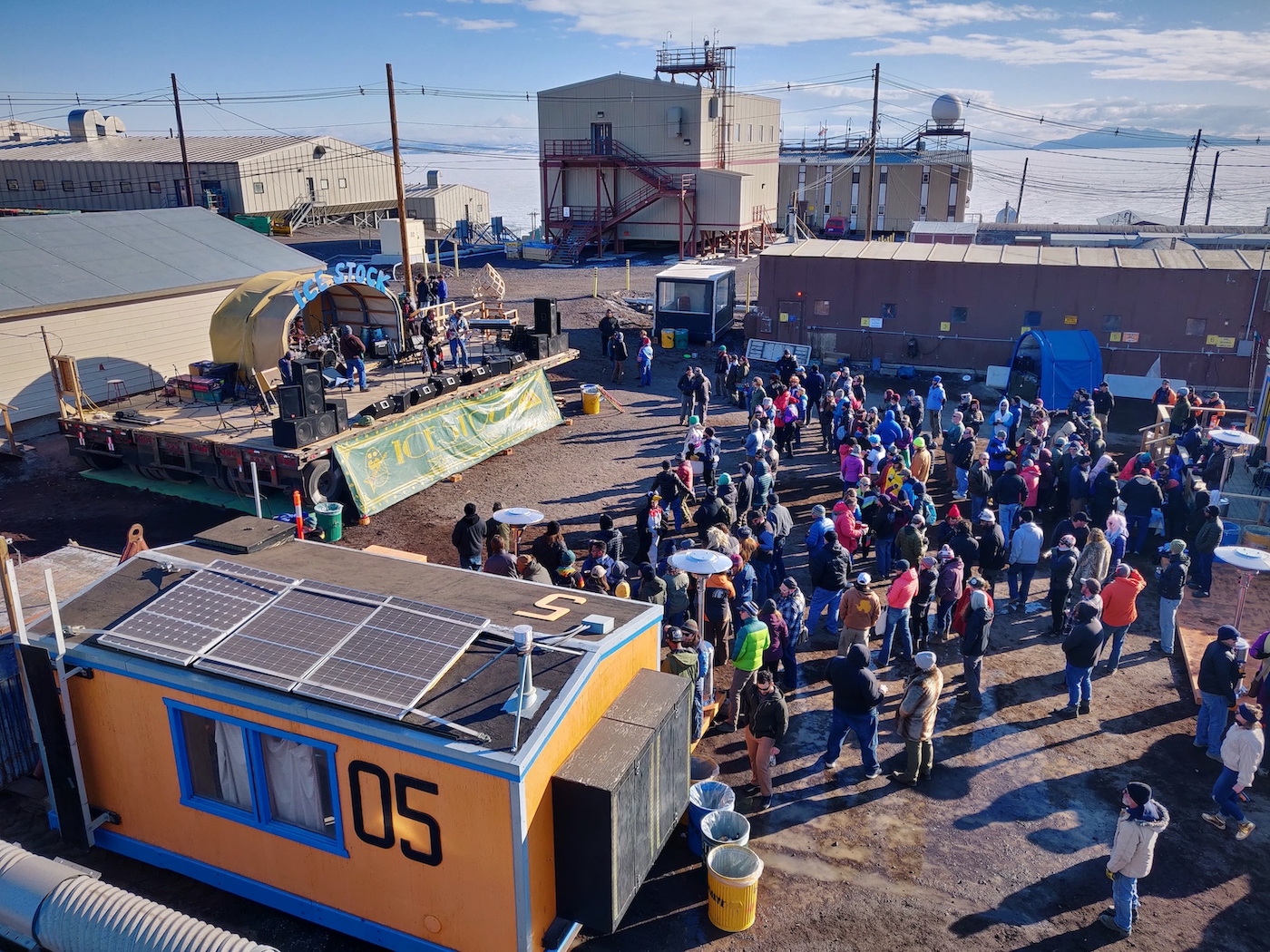
16. Some Dry or Canned Goods are Expired
Like, years expired.
I even found juice powder from every decade since the 90s.
And yes, we still use, eat, and drink them. On the ice, nothing is wasted.
But before you get grossed out, I’d ask you to keep a few things in mind.
One, the early Antarctic explorers survived on seals, penguins, and dry biscuits.
A hundred years later, we’re having fresh eggs for breakfast and lobster for Christmas dinner with slightly old juice powder and canned bean salad.
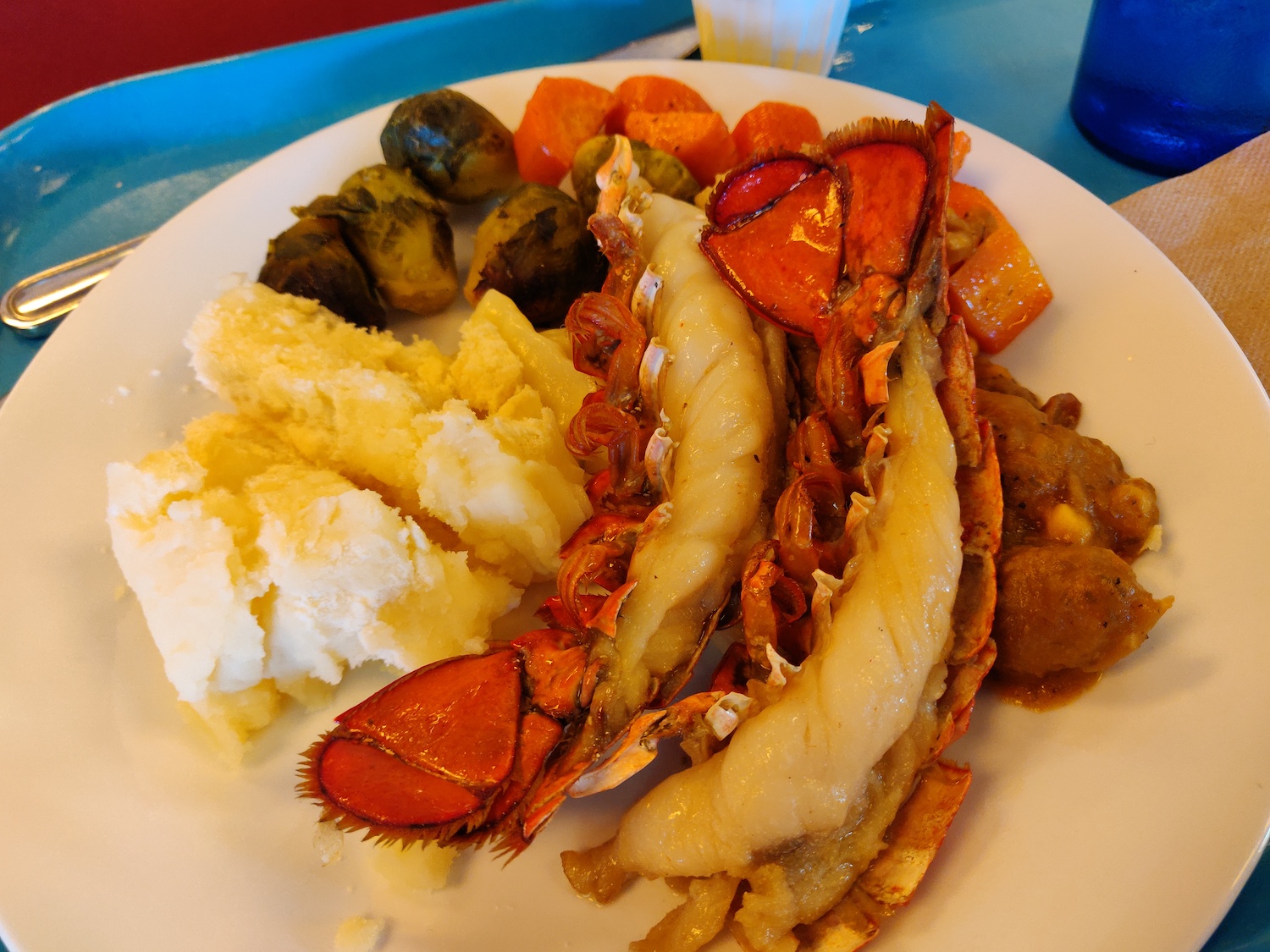
Two, preserved foods are exactly that— preserved.
And expirations dates? Well, I’ve come to know them as suggestions that don’t apply on the coldest, driest, most desolate continent on Earth.
Three, honestly, if you didn’t know the products were expired, it wouldn’t bother you.
The cooks are amazing and the food they prepare is such a luxury.
They’re honestly better than any food I ate in the crew mess (cafeteria) while working on cruise ships.
So your coffee creamer is a few months past the expiration date. It’s a harsh continent.
Related: What Working on Cruise Ships is Really Like: Pros & Cons
17. There’s Brunch Every Sunday
A good meal is all it takes to boost morale on the ice.
Working long hours in the cold and harsh environment while away from family, friends, and the rest of civilization can break even the strongest of people.
To combat that, there’s a Sunday brunch every week during summer full of as much fresh fruit as possible (if there’s any available), a live egg station, hot specialties, freshly baked pastries and desserts, and a smorgasbord of cheeses, smoked salmon or ahi tuna, crackers, and other charcuterie elements.
Life in McMurdo isn’t always easy, but at least it’s a little more pleasant of an experience than what the early explorers went through.
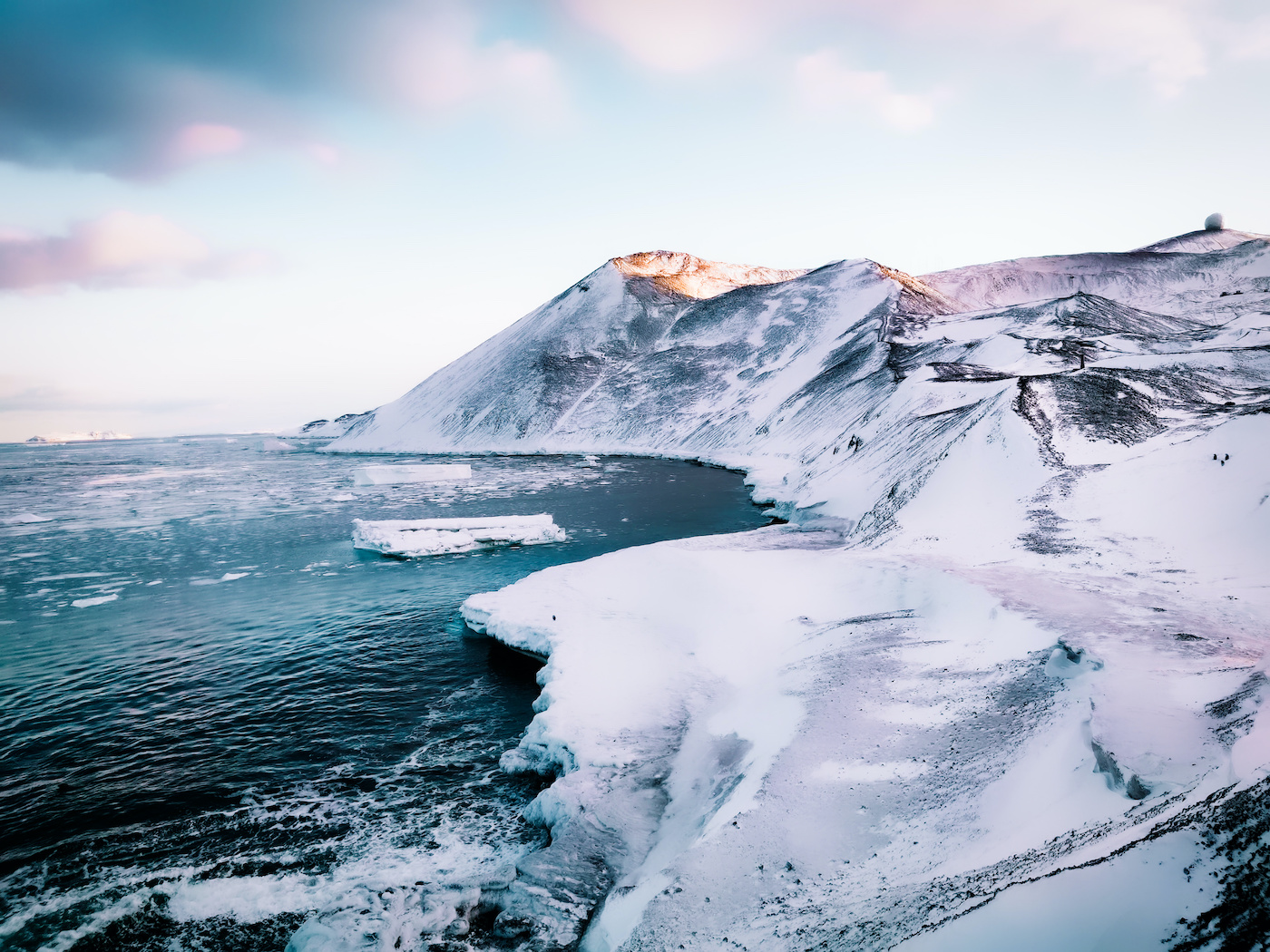
18. There are Secret M&M’s Hidden in the BOG Paintings
In the Back of the Galley (BOG) dining area, all of the large paintings have a small M&M hidden in the artwork.
While it might take a bit to find the first one, the others become easier to search for once you know what you’re looking for.
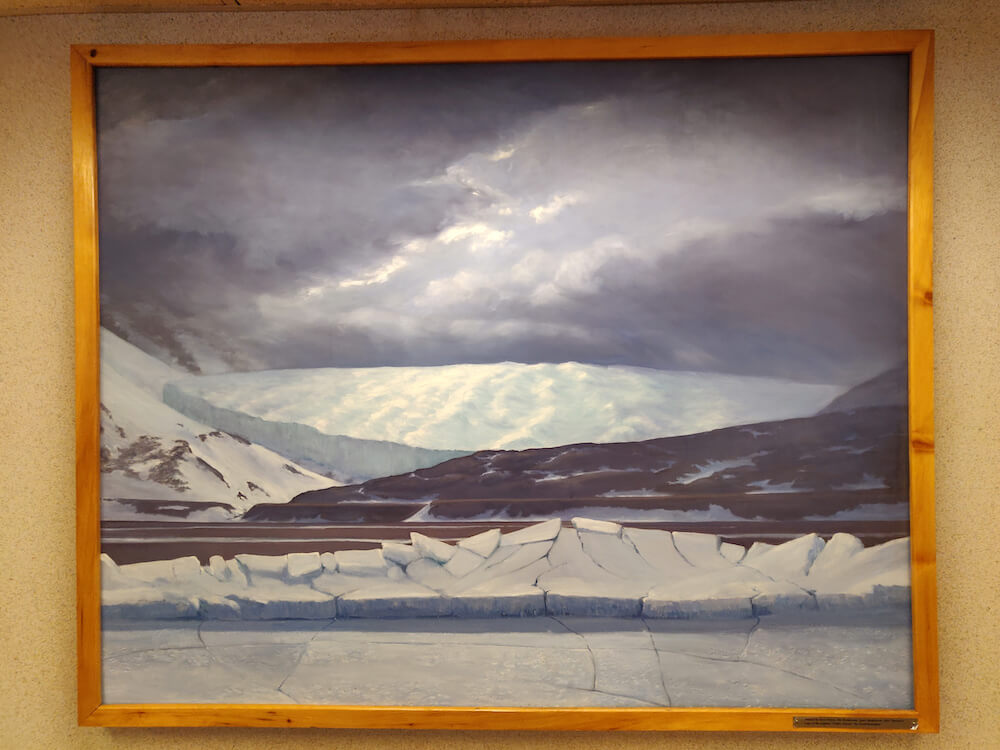
19. There’s Only One Type of Insect in Antarctica
Because of the continent’s harsh environment, there is only one native insect species on the ice known as the Antarctic midge and they stay frozen for 75% of the year.
The flightless insect is the continent’s largest native land animal yet measures less than a centimeter long.
One of the perks about living on the ice was that I never had to worry about ants or spiders.
The only other living creatures around were whales, seals, skua (vicious sky turkeys), and of course— penguins!

20. There are 24 Hours of Sunlight in the Summer and 24 Hours of Darkness in the Winter
Antarctica officially only has two seasons: summer and winter.
Between the austral summer (October to February) the sun never sets, resulting in 24 hours of sunlight.
While there are a couple months in between the “official” seasons where there’s a bit of both light and darkness, from around April through August it’s nearly always 24 hours of no sunlight.
It’s also during these dark winter months when the Southern Lights (commonly mistaken for Northern Lights in Antarctica) are visible.
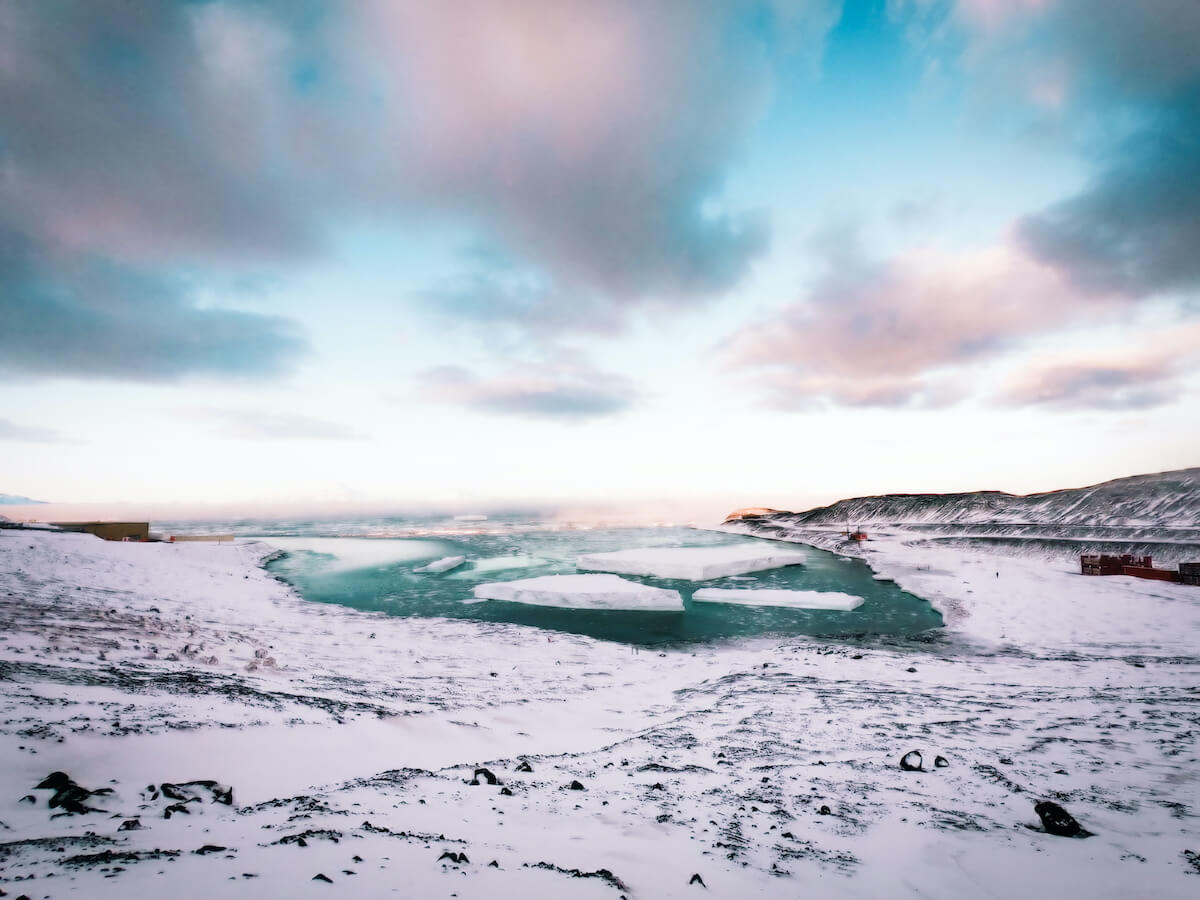
Related: Antarctica Northern Lights & Southern Lights Guide 2023
Are you ready to live in Antarctica? Check out my guide for how you can get paid to live in Antarctica to find out all the information you need about living and working on the ice!
P.S.- Many thanks to my wonderful ice friends who helped me piece together the random details for this post!
Additional Antarctica Posts:
- How I Got Paid to Live in Antarctica: FAQ About Working on the Ice
- McMurdo Station Packing List for Working in Antarctica
- Working in Antarctica: Supply Tech Jim Huston | Stories from the Ice
- Working in Antarctica: Blaster Garry Rex | Stories From the Ice
- Life at the South Pole Station: Everything You Want to Know
- Antarctica Northern Lights & Southern Lights Guide 2023
- How to Get Paid to Travel to Every Continent (Yes, Even Antarctica)
Pin and Save
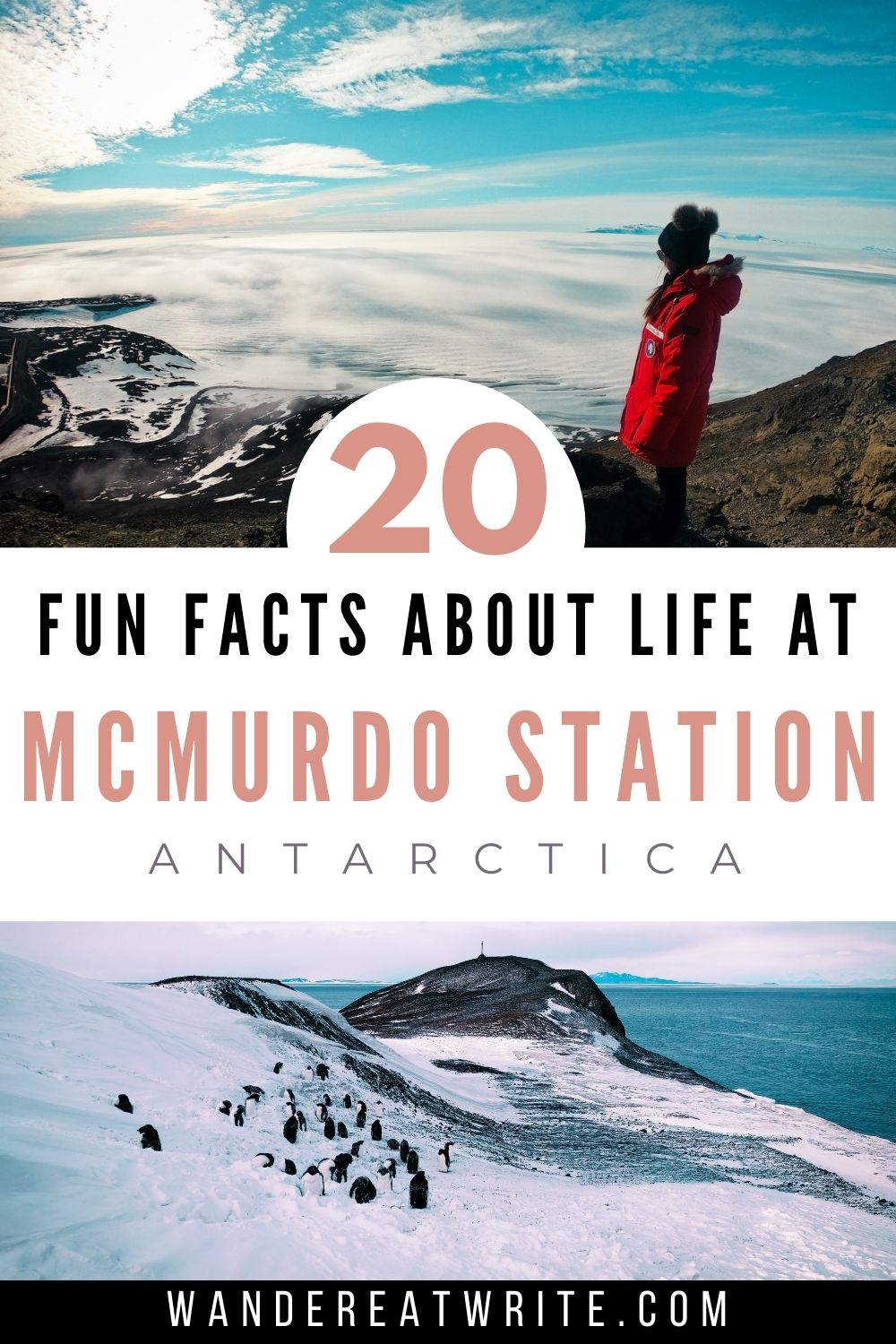
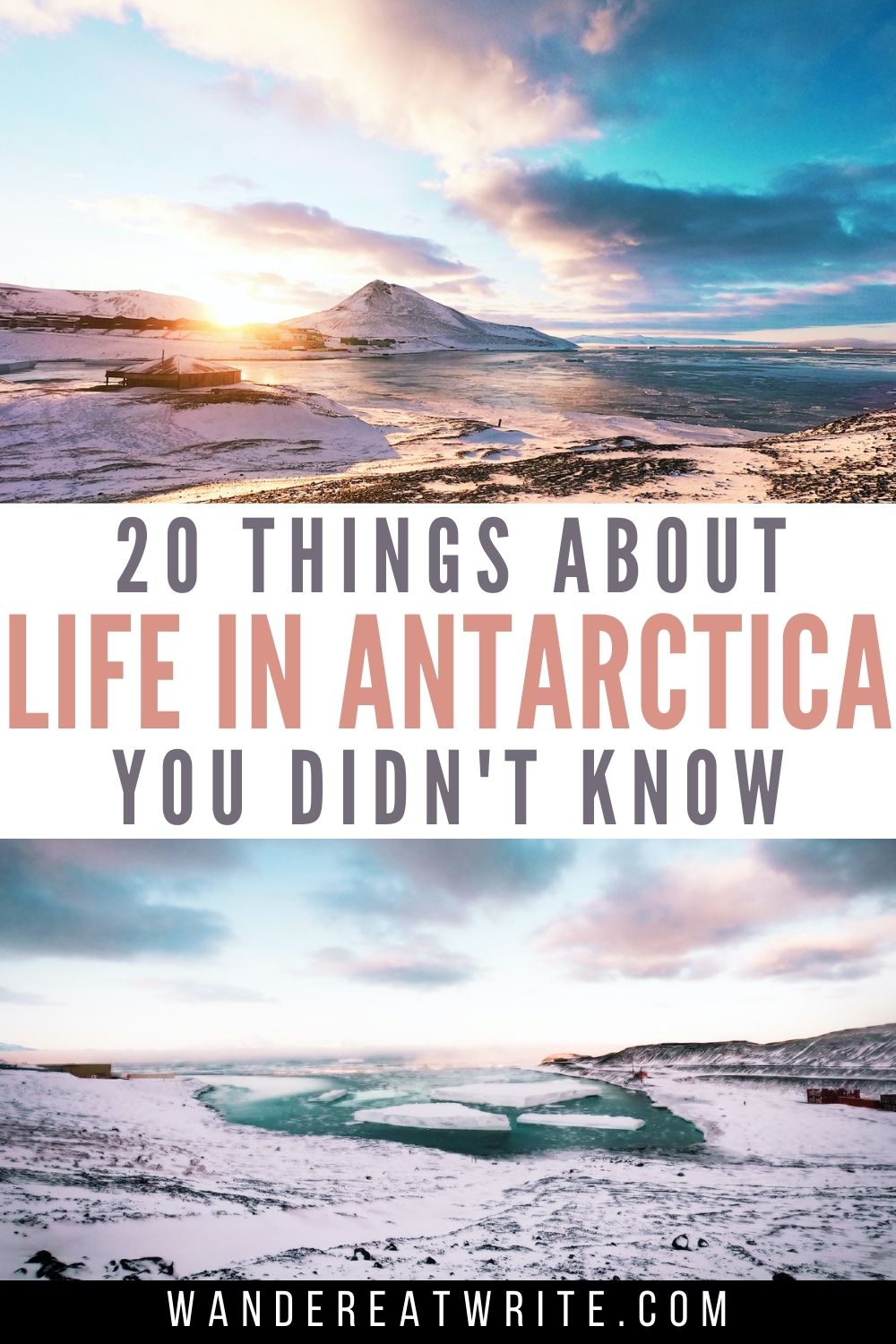
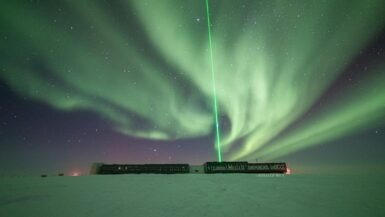

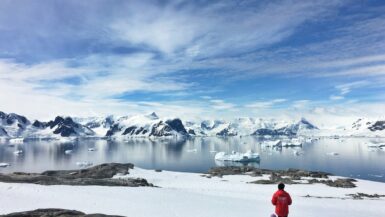
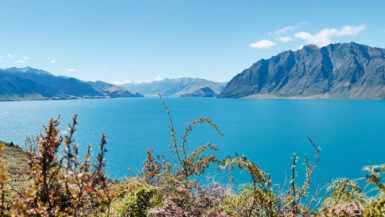
Wow! This is so interesting. I never knew what life was really like in Antarctica and I love how you go into detail in this article. It is great they do everything they can to keep Antarctica clean! :)
As all good stewards of this planet should!
What a fascinating glimpse of life at McMurdo Station. I had no idea that women were required to take pregnancy tests before overwintering. It makes sense but still… And shipping all human waste back to the mainland! It’s good to see that people aren’t leaving it there. Very interesting.
Definitely a place with lots of quirks but such a unique place to experience!
That was absolutely fascinating, thank you for sharing! I met a lovely couple in Kerikeri, New Zealand, who met in Antarctica and work there 6 months of the year. Really interesting to have a deeper understanding of what life is like there when you live there. Oh, the pee bottle, and if it’s freezing and you’re outside? Oh gosh, wow! And alcohol rations, cannot imagine! Good on you.
You learn a lot of new skills on the ice ;)
The adventure of a lifetime (maybe two lifetimes!) While live “on the ice” sounds grueling, I’m sure it gives you a perspective so few have & such a different relationship to the Earth. I love love loved reading this very cool post.
Thanks for reading! It really makes you wonder what the rest of the world would look like if all waste were properly handled and the environment a priority.
Wow, what an incredible experience! I’d love to visit Antarctica, but I’m not sure I’m cut out to stay there for a long time! I don’t do well in cold weather! Thanks for this fascinating insight into life on the continent!
I’m terrible with cold weather as well but sometimes sacrifices have to be made for great adventures!
Coolest post I’ve read so far! How fascinating!
This was a fascinating read; I genuinely enjoyed it! Seems like such an adventure to live on Antarctica!
Thanks for reading! It definitely was an unforgettable adventure :)
This is absolutely fascinating and I have to say, I am a bit jealous. What a thing to experience – something I would love to do at least once in my life. I know it isn’t all glamourous, but what an entirely different world. Thank you for sharing your thoughts about this place ( a place none of us will ever be able to visit as tourists!).
Luckily, there are ways to get down there without paying for an Antarctic cruise or expedition, even if you’re not a scientist! You can read more about how I was able to get a dishwashing/ floor mopping job here: https://wandereatwrite.com/how-i-got-paid-to-live-in-antarctica/
This is so fascinating! I absolutely love all of your blog posts; I always learn something new!
Thanks for following along with my adventures! It really means a lot :)
This is so cool! It blows my mind that you were able to live in Antarctica. I love reading about the workings of how you can be there. What an amazing experience!
Great post and love these facts. Some of these ate not so surprising and the meteorites thing makes sense since the scientist in the movie eight below was looking for one. Also good to know that zi need a pregnancy test if I want to visit as a scientist. Lol.
I didn’t know that! I’ll have to check out that movie.
That was definitely full of fascinating facts. I had never heard of McMurdo Station. This is a great experience but I’m not sure how I would cope with no sunlight!
Me neither! I left just a couple weeks before it went dark but I absolutely loved having 24 hours of sunlight.
I loved reading about this, so interesting. And of course so many of the points you talked about make complete sense. What an experience!
This is amazing that you got to experience it. I’m looking into a few isolated trips but nothing like this!
This looks so fun! I love reading about all the cool opportunities you have experienced throughout the world… really inspiring!
Thanks for reading! There are so many ways to see this world, it’s all about finding what works for you.
So many things that I never would have thought about before reading this post. Namely, the pregnancy test thing and having to leave if you become pregnant. It makes sense for safety, but that would suck if you got pregnant while you were out there and had to leave.
Agreed, but what a story that would be!
Thanks for sharing. My son Jonathan is there now working as a chef. He seems to like it a lot.
This is really well done. Thank you! I’ve been looking for some realistic accounts of recent visits to Antarctica and Mcmurdo and you definitely hit the mark. Looking forward to exploring more of your content. Thanks again!
I was there in 1968 with the Royal New Zealand Navy. They used. to say that it was a “great place with a girl behind every tree.” In those days it was true.
We didn’t take pregnancy tests this winter! I kept waiting to be told to go to medical but I’d heard rumors that stock is too low on tests so they just didn’t test us this year. Is that the truth? Or did they just not want to know because station population is so sparse this winter and no one wanted to stay? WHO KNOWS?
Interesting! I guess things are always changing down there, especially during COVID seasons ¯\_(ツ)_/¯
Thanks. Good read.. I’m going back for 2nd deployment soon. I was there cooking 8/2018-2/19. I forgot about the M&Ms in pics. Fruit loops with the misty frosty ice cream was my favorite vice
Long live Frosty Boi!
How long ago was your deployment? I’m scheduled -support staff/contractor- to be on the ice 10 feb (2023).
my biggest concern is keeping track of bills and home stuff while I am away. Mixed bag of emotions about wintering over, but not passing up the opportunity to add this to the resume.
I was in MCM 2019-2020 and 2021, South Pole after that. Taking care of errands back home can definitely be challenging but is totally worth the adventure (and completely do-able!). Best of luck on your deployment!
EXCELLENT article. Love the spaced out and easy to read font. Great pics. Our daughter used your super helpful packing list and is currently in Christ Church gearing up. She said you were a guest speaker on one of her zoom calls and that you were really sweet. Good luck in your future endeavors.
Hey Michelle!
This might be a long shot, but I was on TDY at McMurdo in 2020 and got one of those SPOA stickers (I’m 5’2″ on a good day!). I put it on my laptop so that it could go everywhere with me. Unfortunately, my military backpack with all of my most prized possessions was stolen in 2021, and one thing I was absolutely heartbroken to lose was my SPOA sticker, as it was so special and unique and reminded me constantly of the coolest place on earth. Do you happen to still have contact with anyone who has access to those? I’d love to replace mine!
Hey Jayme, so sorry to hear about your lost SPOA sticker! I’ve tried to get in touch with the person who made them but never heard back unfortunately :( If I ever hear back I’ll let you know.
Ahhhh what en experience! I’d love to do something similar! Thank you for sharing!